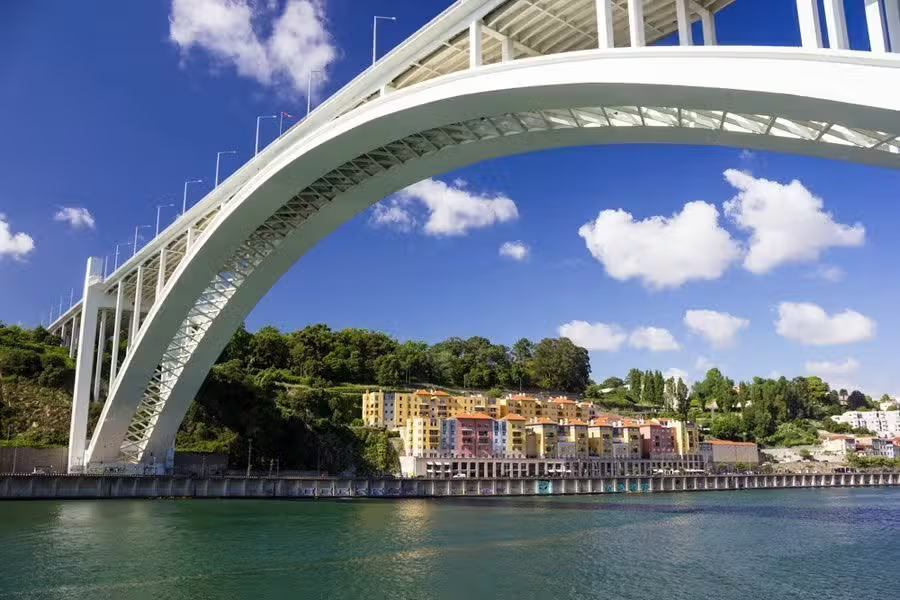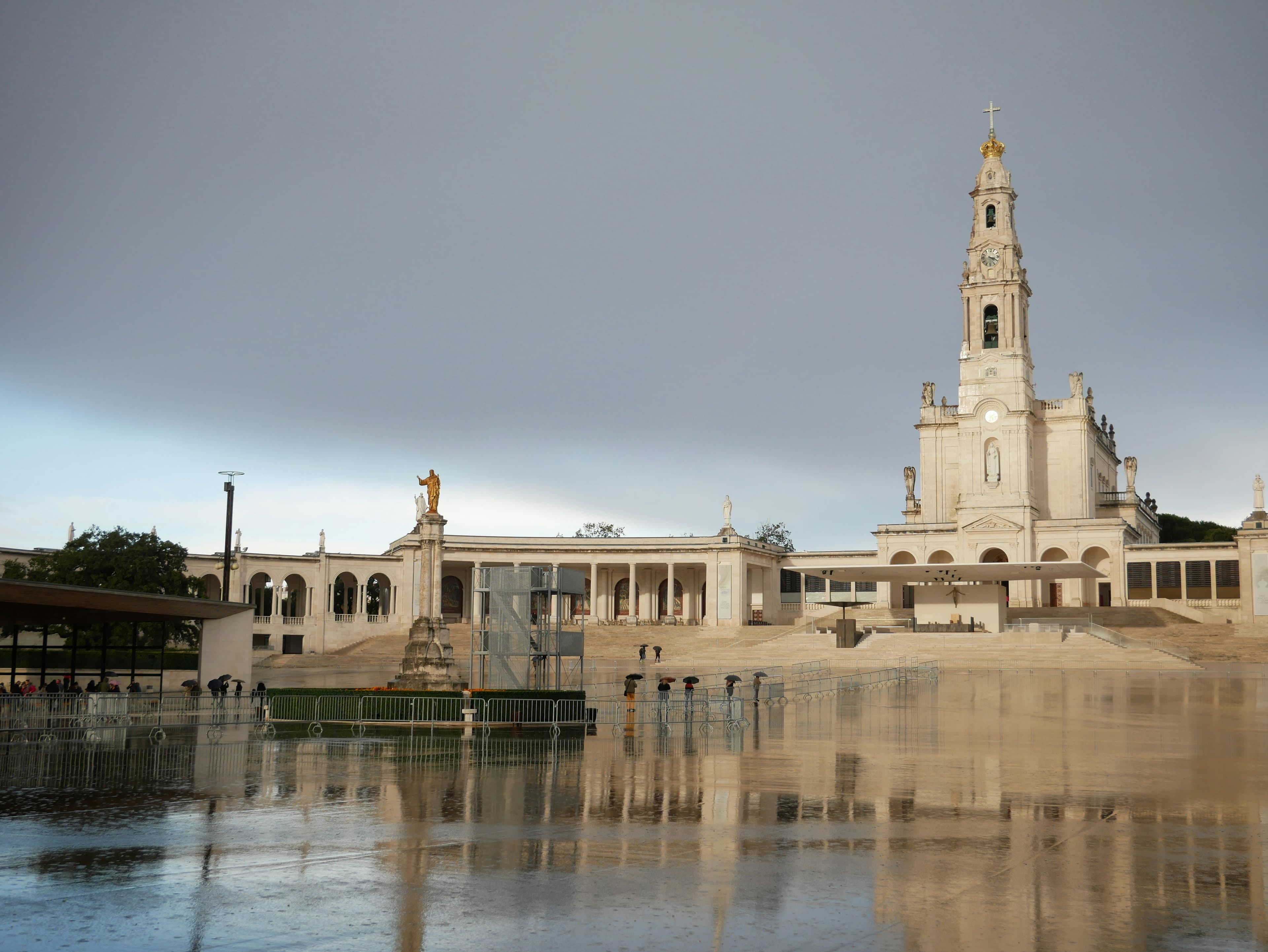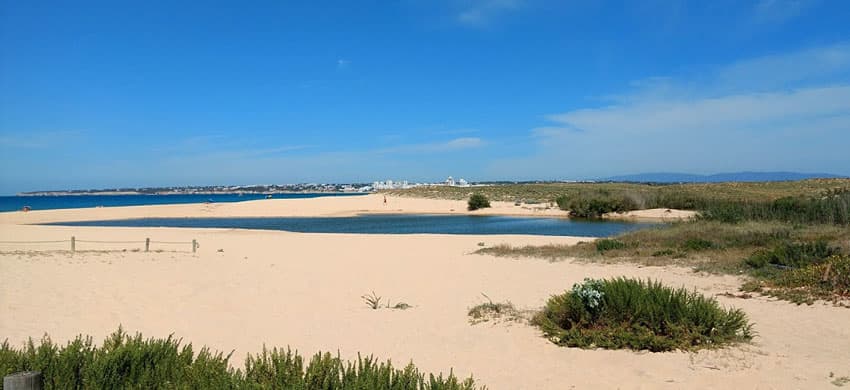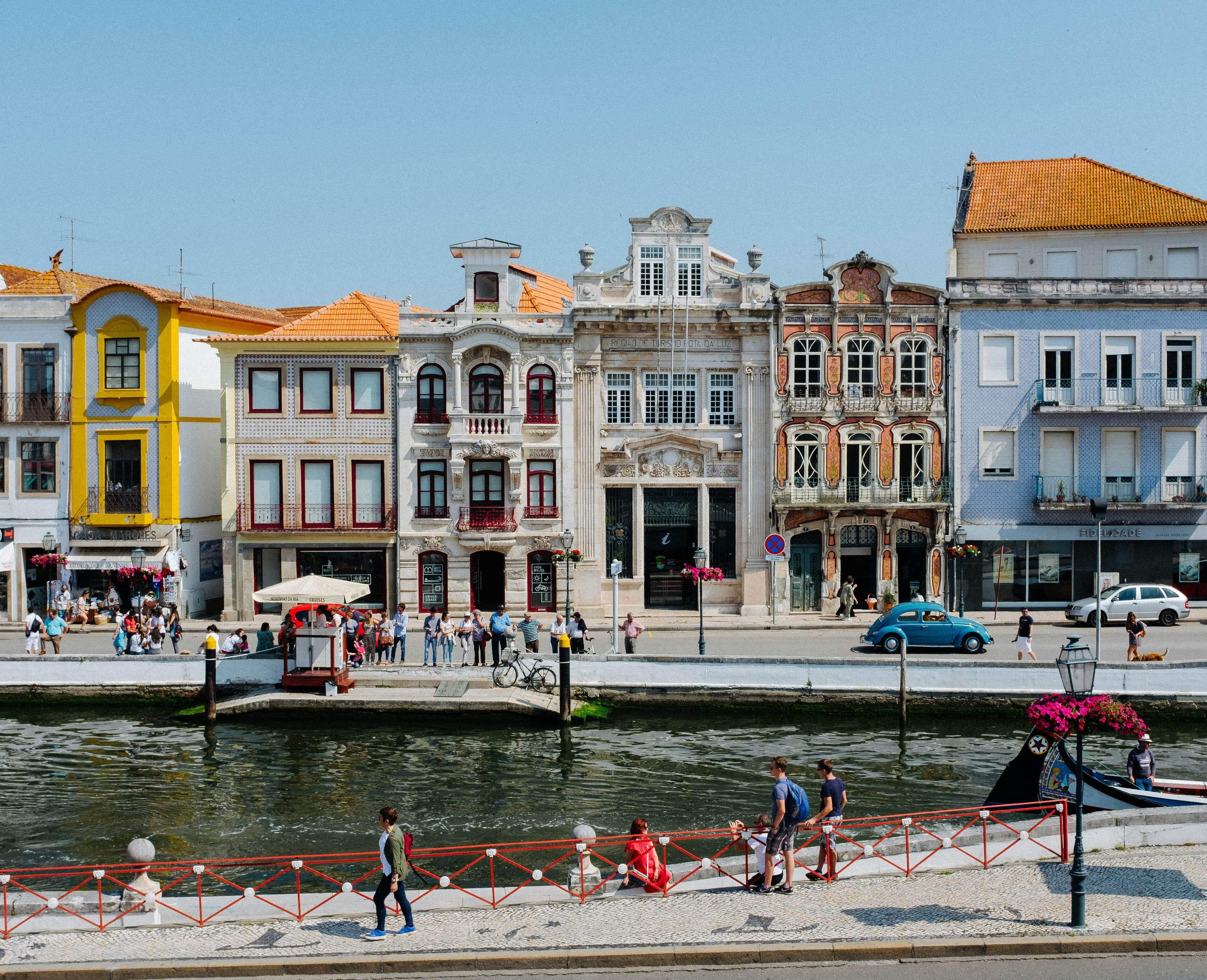
The Six Iconic Bridges of Porto
Discover Porto’s iconic bridges : history, architecture, and tips to explore them like a local.
Porto is a city that comes alive not only through its cobbled streets and colourful façades but also through its majestic bridges. Crossing the Douro River is not merely moving from one bank to the other: it is feeling the heartbeat of the city. These bridges tell centuries of history, engineering feats, and poetry !
Today, we invite you to discover the six iconic bridges of Porto; symbols of a unique heritage, which you will experience differently depending on whether you are a short-term visitor or a new resident of the city.
Luís I Bridge, The Double-Decked Symbol
Let us start with the bridge everyone knows, the famous and unique Luís I Bridge (also called Dom Luís Bridge) ! It is impossible to talk about Porto without mentioning this steel silhouette linking the Ribeira district to Gaia. It appears on almost every postcard and panoramic view, and every visitor ends up crossing it at least once, often several times.
Built between 1881 and 1886 by engineer Théophile Seyrig, a disciple of Gustave Eiffel, it stands out for its two levels : the lower deck for vehicles and pedestrians, and the upper deck for the metro and walkers.
This bridge is a perfect connection between history and modernity. Each crossing lets you feel the power of its metal structure, the Atlantic breeze, and the sensation of being suspended above Porto! For an unforgettable experience, we recommend walking across the upper deck at sunset. The view is breathtaking ! You will see the historic city, the wine cellars of Vila Nova de Gaia, and the Serra do Pilar Monastery. In the evening, golden lights reflect on the Douro, and the atmosphere becomes almost magical, don’t forget your camera!
A fun fact : in the Ribeira area, some children (and occasionally teenagers or young adults) jump off the bridge into the Douro in daring dives. This tradition has been passed down through generations and embodies the free-spirited nature of Porto’s inhabitants, blending courage, play, and neighbourly camaraderie. These youngsters, known as “Meninos do rio”, literally “the river children”, symbolise a deep connection to the Douro and the living traditions of the historic Ribeira neighbourhood. If you visit Porto in summer, you will likely have the chance to see them !
Arrábida Bridge, Grandeur and Modern Horizons
Further west, near the mouth of the Douro, stands the Arrábida Bridge. This is an exceptional engineering achievement, designed by Portuguese engineer Edgar Cardoso and inaugurated in 1963. Its massive concrete arch, nearly 70m above the river, gives it both a majestic and elegant presence. For a long time, it even held the world record for the largest reinforced concrete arch.
The bridge connects central Porto with the coastal area and the motorway leading to Lisbon. It is a vital artery for modern city life, used daily by thousands of motorists. But the Arrábida Bridge is not just a practical crossing; it is also an experience! For several years now, it has been possible to climb to the top of the arch in a unique activity in Portugal called the “Porto Bridge Climb”. The safe climb offers a breathtaking view of the Douro, Gaia, and the Atlantic Ocean… definitely worth it !
From the top, you can grasp the full geography of Porto : the city sprawling along the river, the Douro winding through it, and the Atlantic light bathing everything in a golden glow.

© Puente Arrabida
Infante Dom Henrique Bridge, Contemporary Elegance
Heading a little further east, you will find the Infante Dom Henrique Bridge, inaugurated in 2003. Named after the famous Portuguese navigator, it embodies modernity. Designed to replace vehicle traffic from the lower deck of Luís I Bridge, it was carefully crafted by António Adão da Fonseca and Francisco Millanes Mato. Its reinforced concrete arch is one of the flattest in the world, giving it a rare elegance and blending harmoniously into the cityscape.
Locals use it daily, often without thinking twice. Yet it is worth pausing to appreciate. Walking across, you enjoy a peaceful stroll with beautiful views of the other bridges downstream. In the evening, when the city lights start to twinkle, its modern silhouette stands out against the sky. Infante Bridge is a symbol of contemporary Porto: a city on the move, modernising without ever losing its soul. It is also a fantastic vantage point for watching the fireworks during the São João festival.
São João Bridge, The Railway Link of Renewal
A little further upstream, you will find the São João Bridge, inaugurated on 24 June 1991, during the spectacular São João festival in Porto. Designed by Edgar Cardoso, it replaced the old Maria Pia Bridge for railway traffic. It is reserved for trains, and if you travel between Porto and Lisbon by rail, you will inevitably cross it.
Its design is sleek, modern, and minimalist ! With a central arch of 250m and a white concrete structure, it integrates perfectly into the Douro landscape. It may not have the romantic charm of Luís I Bridge, but it conveys a sober, functional beauty. From the riverbanks, you can admire the succession of bridges : the old Maria Pia (now inactive) and São João just beside it, a dialogue between past and present. It is an ideal spot for architectural photography enthusiasts, and at sunset, the colours make for a spectacular view.
Freixo Bridge, The Everyday Crossing
Further upstream, you will come across the Freixo Bridge, inaugurated in 1995. Less known to tourists, it is essential for residents and workers. It connects residential areas of Porto and Vila Nova de Gaia, a little away from the bustling city centre. With its two parallel decks and multiple lanes, it was designed to improve traffic flow and ease congestion on other bridges.
Freixo may not have the grandeur of Luís I or the prominence of Arrábida, but it has its own charm. Crossing it early in the morning or at sunset, you encounter a calmer, almost secret Douro. For travellers or expatriates living in Campanhã, Gondomar, or Oliveira do Douro, this bridge quickly becomes a practical landmark and sometimes a moment of serenity amidst urban bustle.
Additionally, Freixo runs alongside Porto’s famous football stadium and the Mercado Abastecedor do Porto (a well-known wholesale market).
Maria Pia Bridge, Eiffel’s Legacy
It is impossible to talk about Porto’s bridges without mentioning Maria Pia Bridge, even though it is no longer in service. Built between 1876 and 1877 (by Gustave Eiffel himself !) it was the first major railway bridge to connect the two banks of the Douro. Its elongated metal arch, typical of Eiffel’s style, left a lasting mark on the landscape. Today deactivated and replaced by São João Bridge, its silhouette remains visible from many points in the city. Maria Pia is, in a way, Porto’s benevolent ghost : a testimony to 19th-century industrial ingenuity and engineering excellence.
Which Bridge to Choose According to Your Interests ?
If you are visiting Porto for the first time, you will likely fall in love with Luís I Bridge, for its stunning views and intense experiences, located right next to the iconic Ribeira district. For a more modern and panoramic experience, Arrábida Bridge impresses with its height and Atlantic vistas. To travel efficiently (by car, for example), Infante Bridge is your best ally, while Freixo Bridge becomes your daily companion if living on the outskirts. São João Bridge is useful for all train journeys. And if you love history, don’t forget to look up at Maria Pia, still watching over the Douro.
What These Bridges Reveal About Porto (and About You)
Each Porto bridge is a true symbol. Together, they tell the story of the city : its courage, creativity, and the need to connect what seemed separate. They also reveal something about you, whether as an expatriate or a traveller: a desire to build links and understand both sides of your own life. These bridges are not just crossings; they are viewpoints, breaths of air, places of emotion. You come for transit, but often stay a little longer, just to observe and admire.
In Porto, bridges do not divide… they unite. They reflect the identity of a city that keeps evolving while preserving its authenticity. Whether you visit for a few days or live here for years, they quickly become familiar landmarks, like faces you recognise in a crowd.
Porto’s bridges are not merely feats of engineering : they are living works of art. Each has its own story, personality, and purpose. Together, they form a true map of the city’s identity. Their beauty lies in their diversity : from the romance of Luís I to the modernity of Infante; from the strength of Arrábida to the quiet charm of Freixo. Whether you are a tourist, a new resident, or a Portugal enthusiast, taking the time to cross them is to understand Porto differently: not through its streets, but along the river where everything begins and everything connects.
Moreover, it is possible to see all six bridges from the river in the Ribeira district through boat or Rebelo excursions, such as those offered by Tomas do Douro, costing around €10–15 per person for an hour of guided tour and explanations.
Share this article
Suggested articles

Fatima, a spiritual place of reference
In the heart of Portugal, more precisely in the Central region, the town of Fátima stands as one of the most powerful symbols of spirituality in the world. Yes, you read that correctly! Every year, it welcomes millions of pilgrims from around the globe to relive the Marian apparitions of 1917 and to find a moment of reflection within the majestic Sanctuary of Our Lady of Fátima…

Bairrada, Land of Suckling Pig and Sparkling Wine
In the heart of central Portugal, between the valleys of the Mondego and Vouga rivers, lies the region of Bairrada, a land where vineyards meet pig farms, where the slow heat of wood-fired ovens blends with the effervescence of sparkling wine. Here, every meal is a ritual and every sip a celebration. If you’re looking for an authentic Portugal, far from seaside clichés, let yourself be charmed by Bairrada, a land of indulgence, warmth, and tradition.

Serra da Estrela, The Roof of Portugal
It’s impossible not to think of Serra da Estrela when visiting Portugal… Perfect for a mountain getaway, this destination sits slightly off the beaten path, perched in the heart of the country’s central region! Literally translated as “the Star Mountain Range,” Serra da Estrela shows a very different side of Portugal: quieter, more authentic… this mountain truly deserves your attention, and we’ll tell you exactly why!

Nazaré Beaches and Their Giant Waves
Nazaré is a charming coastal town in Portugal, globally renowned for its giant waves crashing onto Praia do Norte… you’ve probably seen them on TV ! But beyond this impressive natural phenomenon, Nazaré offers a variety of beaches suitable for all tastes, from famous surf spots to family-friendly relaxation areas.

Aveiro, the Portuguese Venice
Situated between Porto and Lisbon, the city of Aveiro is often called the “Venice of Portugal” due to its picturesque canals, colourful houses, and rather romantic atmosphere… But Aveiro is much more than that : it is a city rich in traditions, gastronomy, and history!

Coimbra, One of Europe’s Oldest Universities
Located in the heart of Portugal, the charming city of Coimbra is home to one of the most prestigious and oldest academic institutions in Europe: the University of Coimbra! Founded in 1290 by King D. Dinis, it is not only the oldest university in Portugal but also one of the oldest in Europe. Classified as a UNESCO World Heritage Site since 2013, the university embodies academic excellence, tradition, and, above all, Portuguese culture.


